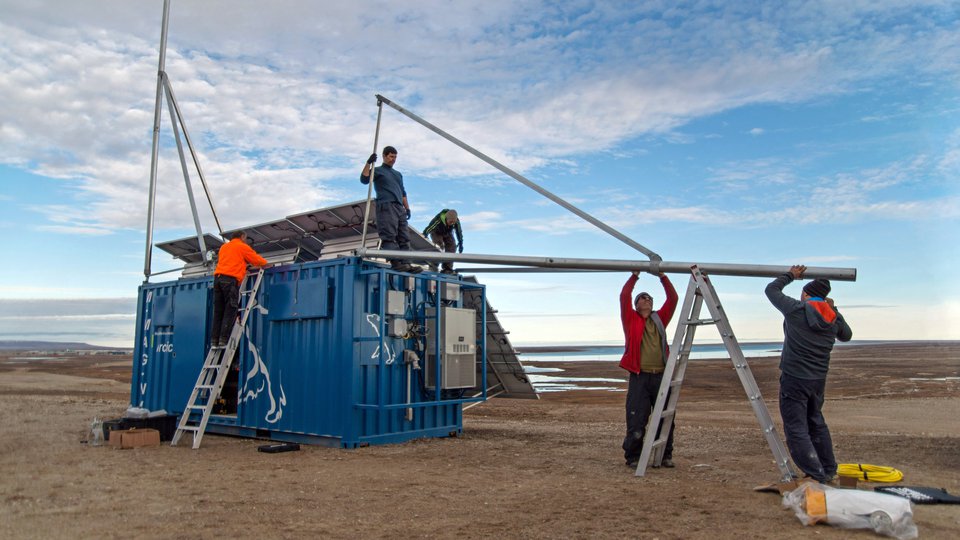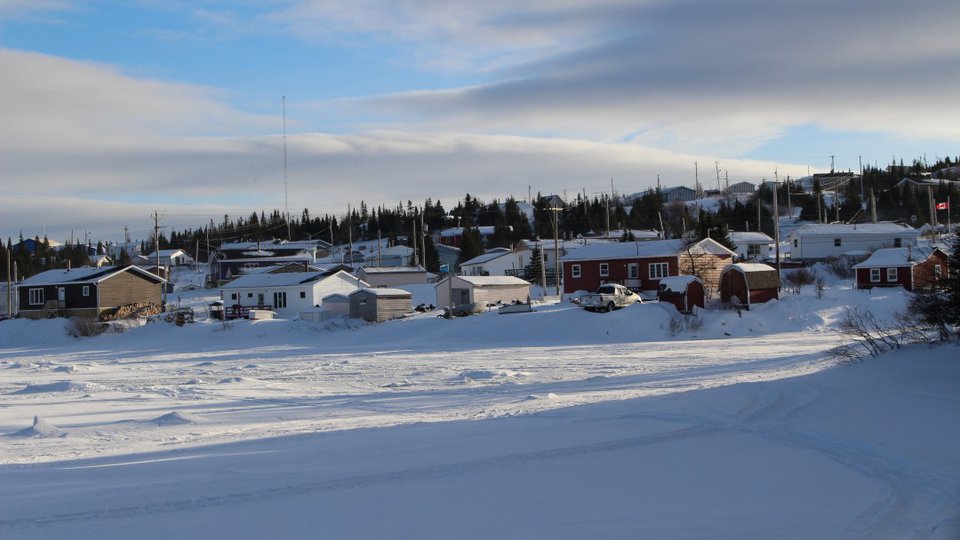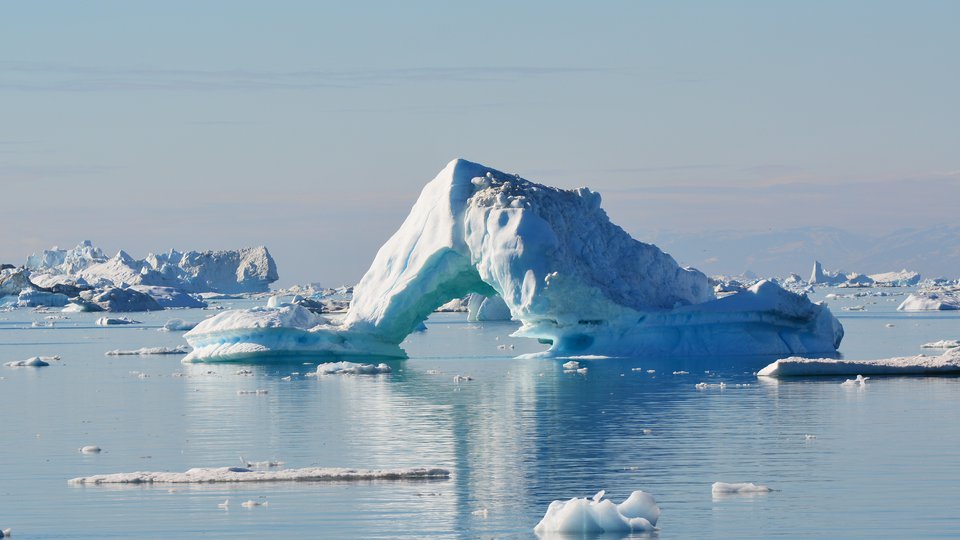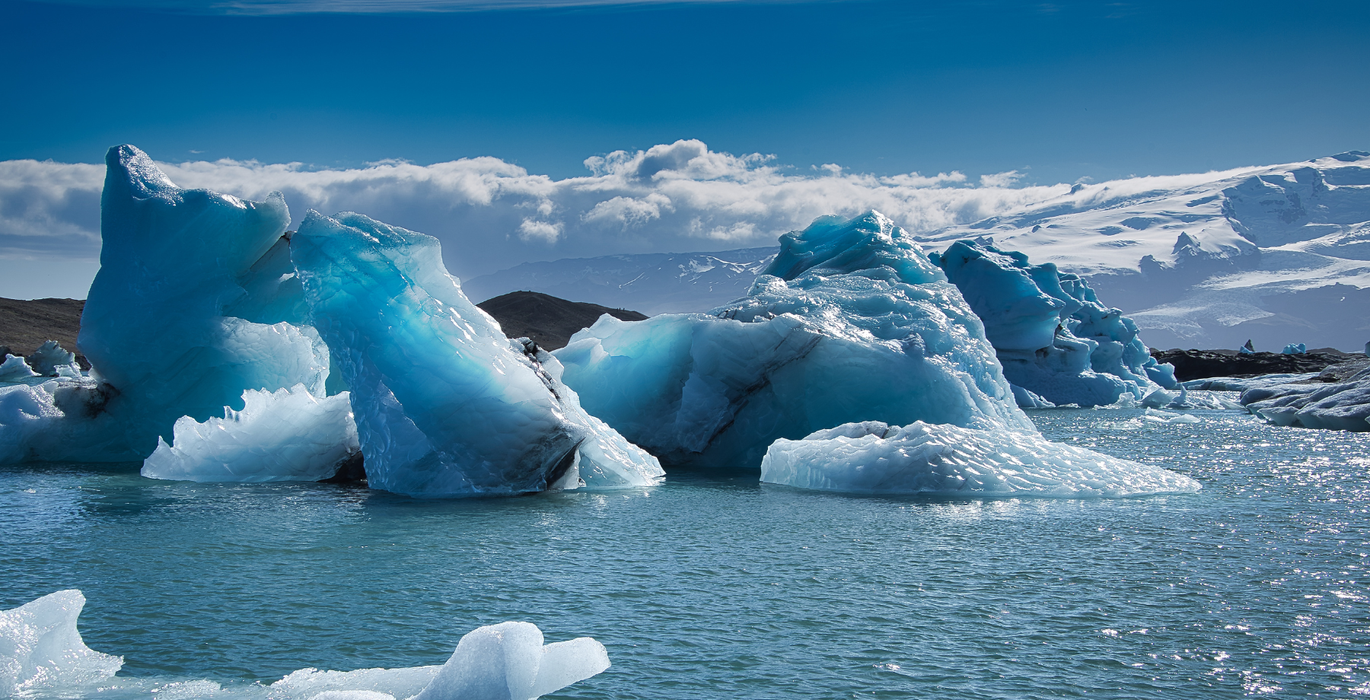
Many are familiar with the connection between sea ice and polar bears – as sea ice melts, polar bears lose the platform they require to hunt, thus making it harder for them to eat, and in turn, negatively affecting their health and well-being.[1]
Polar bears and Arctic sea ice have become a common example of our changing climate because this story is clear and intuitive. However, this is just the tip of the iceberg.
What is often overlooked is the rest of the story – that the entire Arctic ecosystem also depends on sea ice, as does each and every living thing on the planet.
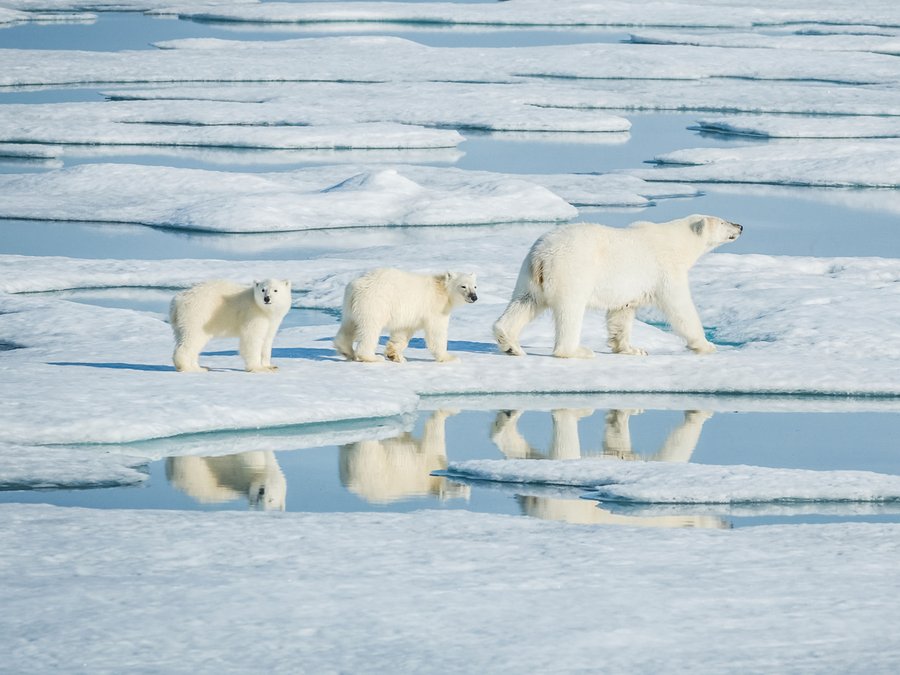
Polar bears and Arctic sea ice have become a common example of our changing climate. (Photo: Stock)
There are two primary types of sea ice – multiyear and annual, or first year.[2] Multiyear ice persists year after year and forms a thick slab of ice that centres over the very top of our globe. Being in the most northern part of our planet, this ice has historically remained frozen throughout the year.
The edges of this polar ice sheet are made up of annual ice. At the southern edges, ice melts during warmer months and forms again during colder months. The ice here is thinner, a key characteristic for life that lives below.
Annual Arctic sea ice forms the structure from which grows the entire Arctic marine food web – not just because it is thin but also because of the way it forms. Sea ice does not freeze in the same way that the ice in your ice cube tray does – after all, it’s frozen saltwater, not frozen freshwater. Since salt itself does not freeze, seawater must expel some of its salt to become ice.[2]
As ice crystals form, they essentially push salt out of their way, much of which falls into the seawater below.[2] This process, called brine rejection, creates microscopic brine channels within the ice. Sea ice, therefore, is porous – imagine tiny pockets and pathways that salty sea water can still exist within.
This porosity, and the thinness of the ice, also allow sunlight to filter through to the bottom layer, a crucial component in the development of photosynthesizing sea ice algae, the base of the Arctic marine food web.[3]
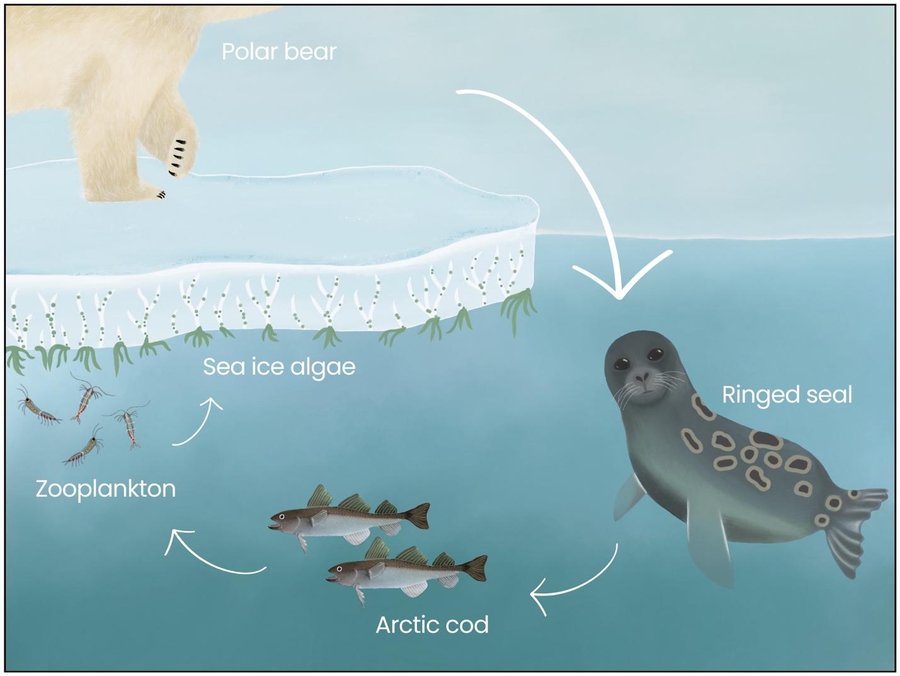
A Simplified Arctic Ecosystem (Illustration: Larissa Thelin)
Everything within the Arctic marine food web relies on sea ice algae, a specific type that has evolved to grow in the very conditions that those salty, sunshiny brine channels provide.[3-4] Simply put, sea ice algae provide food for zooplankton, which in turn feed Arctic fish. These fish feed larger species, like Arctic seals, the primary prey of polar bears.[4]
The future of the largest terrestrial predator on our planet therefore hinges on the ability of Arctic sea ice to provide a space for the tiniest of organisms to grow. Without Arctic sea ice, polar bears would not be able to access seals, not just because they would not have the platform to reach them, but because without sea ice algae, the entire Arctic ecosystem is at risk of collapse.
Arctic sea ice and the health of our planet
People also need Arctic sea ice. This is intuitive when you think about northern communities that use it as a platform for transportation or to hunt and fish.[5] Generations of people have lived alongside, and sometimes on top of, this ice. As it melts, their culture and livelihoods are negatively affected.[5] What is less intuitive, however, is how everyone on our planet depends on that ice as well.
Albedo is the measure of a surface’s ability to reflect the sun’s energy. Darker surfaces absorb more of the sun’s energy and thus have a lower albedo, while lighter surfaces do the opposite.
This is easiest to understand if you think about being outside with a friend on a hot summer day. If you were wearing a white t-shirt and your friend was wearing a black t-shirt, you would both be experiencing that same day in very different ways. By the end of the day, you would feel a lot cooler than your friend, simply because your shirt is helping to reflect some of the sun’s energy away from your body.
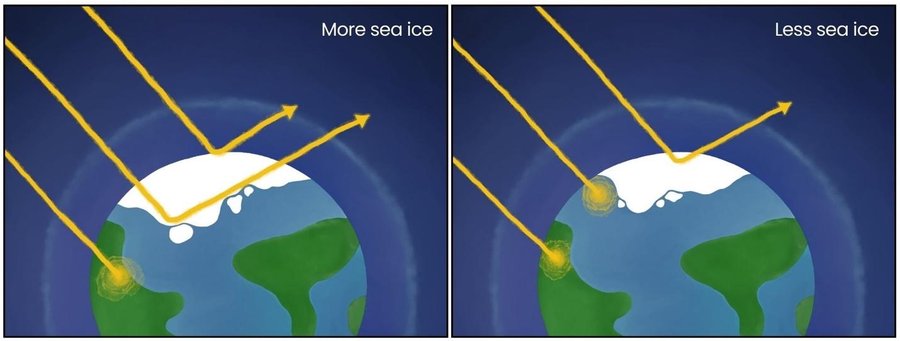
The albedo effect. More sea ice offers a larger surface area and thus reflects more of the sun’s energy, while less ice does the opposite. Less sea ice also causes there to be more ocean surface available, a darker surface that absorbs more of the sun’s energy than it reflects. (Illustration: Larissa Thelin)
That same concept applies to the many different shades that make up the surface of our planet, from natural to man-made. Arctic sea ice, similar to all snow and ice-covered surfaces on Earth, has a high albedo – it reflects the majority of sunlight that hits it because it is almost completely white.[2-3] This means that it redirects the sun’s heat away from our planet and back into space. That is, as long as the ice persists and is able to continue doing its job effectively.
Unfortunately, that is not what’s happening in the Arctic. Warming air and surface water temperatures have caused Arctic sea ice to begin to melt away. As annual sea ice recedes or pools of meltwater collect on the surface of interannual ice, the surface that was once white is now the darker shade of water. What once reflected between 50-90 percent of incoming solar radiation now absorbs most of it instead.[2]
This creates a positive feedback loop; warmer temperatures melt ice, which lowers the albedo, which creates even warmer conditions, which then melt more ice, and so on. In short, as the planet warms, the opposite effect is occurring in the Arctic than what should be happening.
When Arctic sea ice is expansive and working properly, it helps keep our planet at a cooler temperature than if it were not there. Dr. Flavio Lehner, a climate scientist and Assistant Professor of Atmospheric Sciences at Cornell University, explains that without Arctic summer sea ice, our planet’s temperature would likely be ~0.2°C warmer than it is today.[6]
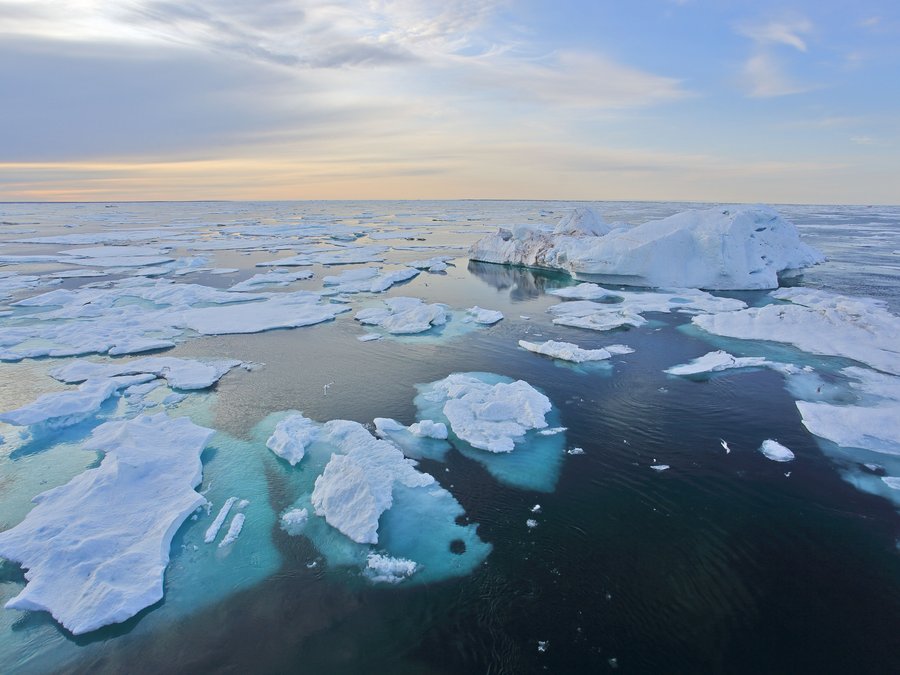
The loss of the entire cryosphere – all ice-covered surfaces on our planet – may contribute about ~0.4°C of warming. (Photo: Stock)
Summer sea ice is the ice that persists through the summer months – that is, not annual ice, but multiyear ice. Some studies suggest that the Arctic may be ice-free during the summer months within the next decade.[7]
The loss of the entire cryosphere – all ice-covered surfaces on our planet – may contribute about ~0.4°C of warming.[6]
“You might think this is a small number, but the cryosphere is just a small fraction of Earth’s surface (~10% and declining). It’s relatively potent in terms of its feedback on global temperature,” explains Lehner. In fact, if scientists are worried about just 1.5°C of warming in general[8], an increase of ~0.2°C means that the loss of Arctic summer sea ice makes up 13% of that alone. The loss of the entire cryosphere? About 27%.
2024 saw the highest recorded temperatures across the globe.[9] It also saw severe wildfires, prolonged heat waves, record droughts, extreme flooding, and an increase in the frequency and intensity of hurricanes.[8] It is not a coincidence that these occurred in the same year. A warming planet destabilizes our climate, causing an increase in natural disasters.[8] These events caused landslides, power outages, evacuations, displacements, infrastructure and crop damage, and deaths.[9] If the Arctic ice cap were to melt away entirely, or even just during the summer months, these issues (and the cost associated with them) would become exacerbated.[6,8]
This story is larger than algae and polar bears.
Even though species and ecosystems hold an intrinsic value that need not be explained, when scientists and science communicators warn of the loss of sea ice and its impact on the many creatures that depend on it, know that these creatures act as conduits.
Our hope is to use the stories of species helpless to these changes for our planet’s overall betterment – to reach through them to you. If I can tell you a story about a starving polar bear, perhaps that is the string I can pull in your heart to lift you into action. Perhaps that is the moment when you decide enough is enough. Make no mistake, the loss of Arctic sea ice impacts us all, just as it depends on all of us to save it.
Literature cited
- Derocher, A.E., Lunn, N.J., & Stirling, I. 2004. Polar bears in a warming climate. Integrative and Comparative Biology, 44(2): 163-176. doi: 10.1093/icb/44.2.163.
- National Snow and Ice Data Centre. n.d. Sea ice: Science. Retrieved from: https://nsidc.org/learn/parts-cryosphere/sea-ice/science-sea-ice
- National Snow and Ice Data Centre. n.d. Sea ice: Why it matters. Retrieved from: https://nsidc.org/learn/parts-cryosphere/sea-ice/why-sea-ice-matters
- Reimer, J. 2018. It’s the little things: From ice algae to polar bears. Retrieved from the Polar Bears International website: https://polarbearsinternational.org/news-media/articles/importance-of-sea-ice-algae-arctic-food-web
- Barette, P. & D. Sudom. 2022. Sea ice in a changing climate and impact on Inuit communities. National Research Council Canada. doi: 10.4224/40002800. Retrieved from: https://nrc-publications.canada.ca/eng/view/object/?id=87524bc0-82ac-4c83-ac0e-f5765babd615
- Wunderling, N., M. Willeit, J.F. Donges, & R. Winkelmann. 2020. Global warming due to loss of large ice masses and Arctic summer sea ice. Nature Communications, 11(5177).
- Jahn, A., M.M. Holland, & J.E. Kay. 2024. Projections of an ice-free Arctic Ocean. Nature Reviews Earth & Environment, 5: 164-176. doi: 10.1038/s43017-023-00515-9
- IPCC, 2023: Sections. In: Climate Change 2023: Synthesis Report. Contribution of Working Groups I, II and III to the Sixth Assessment Report of the Intergovernmental Panel on Climate Change [Core Writing Team, H. Lee and J. Romero (eds.)]. IPCC, Geneva, Switzerland, pp. 35-115, doi: 10.59327/IPCC/AR6-9789291691647
- National Oceanic and Atmospheric Administration. 2024. Global Climate Report: 2024 Annual. Retrieved from: https://www.ncei.noaa.gov/access/monitoring/monthly-report/global/202413#:~:text=The%20year%202024%20was%20the,decade%20(2015%E2%80%932024).
